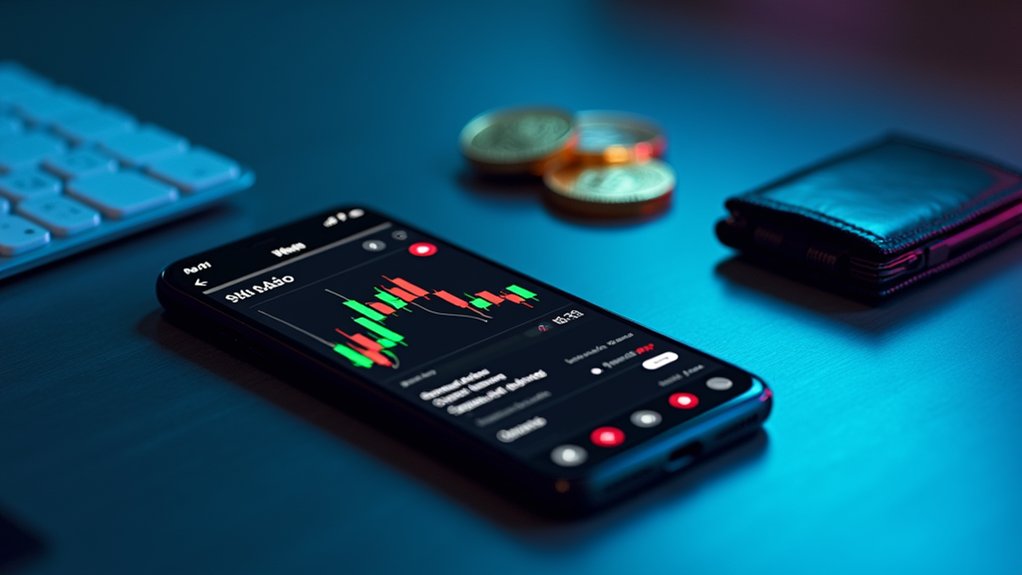To transfer cryptocurrency from Coinbase to KuCoin, users must first secure both accounts with two-factor authentication. After selecting the desired cryptocurrency, they should obtain the correct deposit address from KuCoin, ensuring network compatibility with Coinbase. Using Coinbase's "Send & Receive" feature, investors enter KuCoin's wallet address and specify the amount for transfer. Careful verification of all transaction details, including network selection and associated fees, prevents irreversible errors and asset loss. Further instructions reveal essential subtleties of cross-exchange transfers.

While cryptocurrency exchanges offer users the flexibility to buy and sell digital assets, transferring crypto between platforms has become an essential skill for investors seeking to capitalize on different trading opportunities or access alternative token offerings. The process of moving assets between Coinbase and KuCoin, two prominent cryptocurrency exchanges, requires meticulous preparation and careful execution to guarantee successful transfers without loss of funds.
Prior to initiating any transfer, users must complete several preparatory steps, including the verification of both Coinbase and KuCoin accounts, confirmation of cryptocurrency ownership, and enabling two-factor authentication for enhanced security. Additionally, users should familiarize themselves with minimum transfer requirements for their chosen cryptocurrency and allocate sufficient funds to cover network fees, which vary depending on blockchain congestion and the specific asset being transferred.
Obtaining the correct deposit address from KuCoin constitutes a critical step in the transfer process, requiring users to navigate to the platform's deposit page, select the appropriate cryptocurrency, and choose the correct network type compatible with Coinbase's supported networks. The importance of network compatibility cannot be overstated, as mismatched networks frequently result in permanent loss of transferred assets, a common pitfall for inexperienced traders.
The actual transfer is executed through Coinbase's "Send & Receive" functionality, where users must input the previously obtained KuCoin wallet address and specify the transfer amount. Following the five steps required for a successful transfer ensures that assets move smoothly between platforms. For assets operating across multiple blockchains, like USDT or AVAX, manual selection of the correct network becomes imperative; Ethereum (ERC-20) for USDT transfers and Avalanche (C-Chain) for AVAX serve as common examples of network configurations. Understanding that these are on-chain transactions is crucial, as they are irreversible and will incur network fees unlike internal Coinbase transfers.
Before finalizing any transaction, users should utilize Coinbase's preview feature to meticulously review all transfer details, including the recipient address, asset type, selected network, and associated fees. This verification step, though often overlooked, represents the final safeguard against potential errors in the increasingly complex landscape of cross-exchange cryptocurrency transfers, guaranteeing funds reach their intended destination securely and efficiently.
Frequently Asked Questions
Is There a Minimum Amount Required for Transfers?
Both platforms enforce minimum transfer thresholds, which vary by cryptocurrency.
Coinbase imposes asset-specific withdrawal minimums (e.g., 0.0001 BTC), available through their API documentation.
KuCoin similarly maintains minimum deposit requirements, displayed on their deposit interface for each asset.
Users must calculate the total amount including network fees, which fluctuate with blockchain congestion, to guarantee the final deposit exceeds KuCoin's minimum threshold, since transfers below these limits may result in unrecoverable funds.
How Long Do Transfers Typically Take?
Transfer times between cryptocurrency platforms typically vary based on several key factors, including network congestion, blockchain type, and required confirmations.
Ethereum-based tokens generally process within 1-15 minutes, while Bitcoin transactions may take 10-30 minutes due to longer block times.
XRP and native blockchain coins tend to process more rapidly, often under 2 minutes.
Users should consider conducting transactions during off-peak hours to minimize delays caused by high network activity.
What Are the Transfer Fees for Both Platforms?
Coinbase imposes variable withdrawal fees based on the cryptocurrency transferred and network congestion, with Bitcoin typically ranging from $1-$5 and lower fees for other assets.
KuCoin, on the other hand, does not charge platform-specific fees but passes network costs directly to users.
Both platforms' effective transfer costs fluctuate with blockchain congestion levels, while Coinbase also factors in transaction batching, which may reduce individual transfer expenses during high-volume periods.
Can I Reverse a Transaction if I Make a Mistake?
Blockchain transactions cannot be reversed once confirmed on the network, representing a fundamental characteristic of distributed ledger technology.
For unconfirmed transactions, limited options exist depending on the specific cryptocurrency and wallet functionality; Bitcoin offers Replace-By-Fee (RBF) capability if enabled, while Ethereum transactions may be replaced with higher gas fees before confirmation.
Users should meticulously verify recipient addresses, since recovery options for confirmed erroneous transfers are virtually non-existent, barring direct negotiation with identifiable recipients.
Are There Any Security Measures I Should Take During Transfers?
During cryptocurrency transfers, implementing robust security measures is essential. Users should enable two-factor authentication on both platforms, verify wallet addresses multiple times before confirming transactions, utilize a secure VPN connection to encrypt network traffic, and avoid conducting transfers on public Wi-Fi networks.
Additionally, maintaining updated antivirus software, using hardware wallets for large transactions, and confirming completion through official confirmation mechanisms considerably reduces the risk of theft, interception, or irreversible errors.









